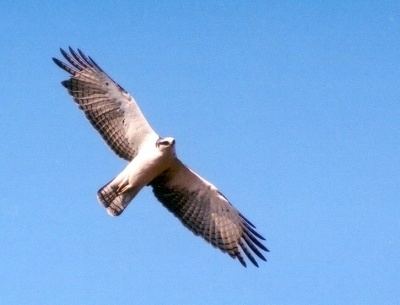Kingdom Animalia Order Accipitriformes Scientific name Lophotriorchis kienerii Rank Species | Phylum Chordata Family Accipitridae Higher classification Lophotriorchis | |
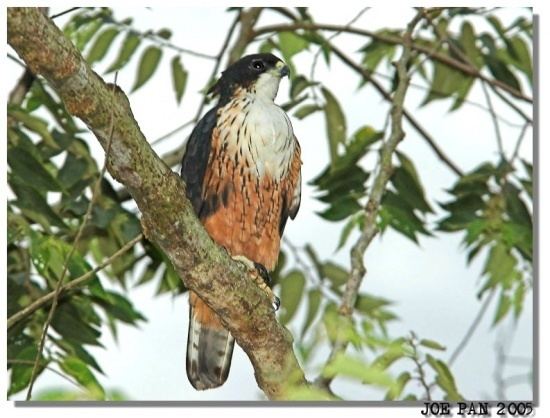 | ||
Genus Lophotriorchis
Sharpe, 1874 Similar Bird, Accipitridae, Lesser fish eagle, Semicollared hawk, Grey‑headed fish eagle | ||
Rufous bellied hawk eagle
The rufous-bellied hawk-eagle (Lophotriorchis kienerii) is a bird of prey in the family Accipitridae that is found in the forested regions of tropical Asia. Relatively small for eagles and contrastingly patterned like a falcon, this species was earlier placed in the genus Hieraaetus and sometimes also in the genus Aquila but thought to be distinctive enough to belong to a separate genus.
Contents
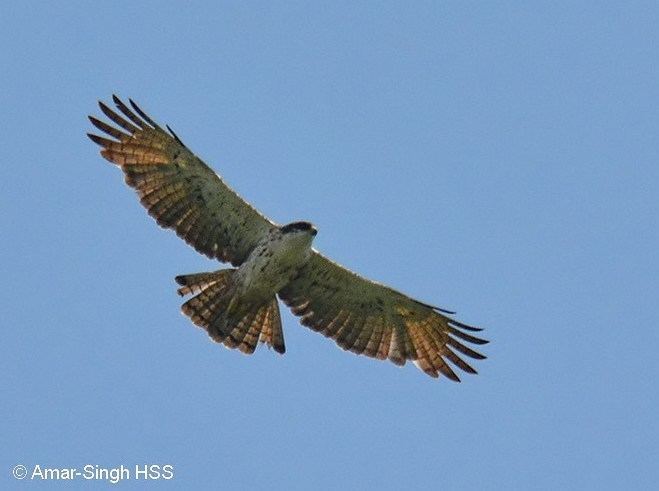
Description
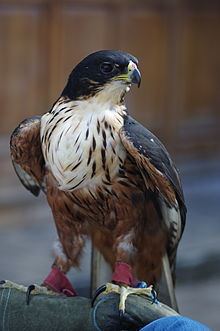
Adult rufous-bellied hawk-eagles are distinctive in their pattern. They have a black hood with a short crest. Chestnut underparts and wing coverts contrast with the white on the throat and breast. The sexes are almost indistinguishable in plumage but females are slightly larger and have more black on the face. They perch in a very upright stance and the wingtip almost reaches the tail. The tarsus is fully feathered. Juveniles have very white underparts with dark markings on the sides of the body, head mask and edge of underwing coverts. They can appear similar to a booted eagle (Aquila pennata). In flight, the underwing lining is dark and the greater coverts are black. The flight feathers are thinly barred with a black edge. The tail is dark and barred.
Taxonomy
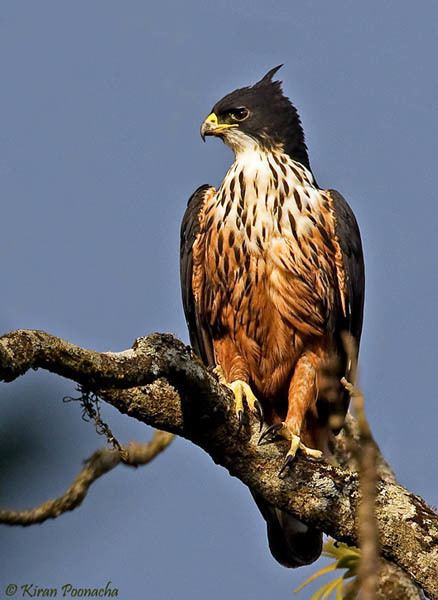
This eagle was originally described as Astur kienerii on the basis of a specimen from the Himalayas. It was later moved to Limnaetus by Jerdon, the genus Lophotriorchis and still later to Hieraaetus, the so-called "hawk-eagles". A study of the phylogeny of some Hieraaetus species and other eagles indicated that they were nested within the Aquila clade of eagles, resulting in their repositioning. Another molecular study of the eagles suggested that kienerii was distinctive enough to be retained in a separate genus for which the name Kienastur had been suggested but as this occurred in a thesis it is invalid for taxonomic purposes, and in any case Lophotriorchis was proposed much earlier (though originally shared with the Black-and-chestnut eagle which is nowadays placed in Spizaetus).
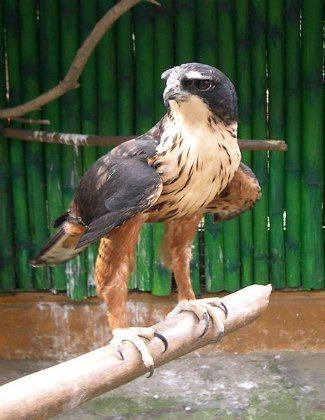
Within its wide range, two subspecies are recognized although there is no marked plumage difference. The nominate kienerii of India and Sri Lanka (the northern birds are larger); and formosus described by Erwin Stresemann in 1924 which is widely distributed across Southeast Asia from Burma to Sulawesi.
Habitat and distribution
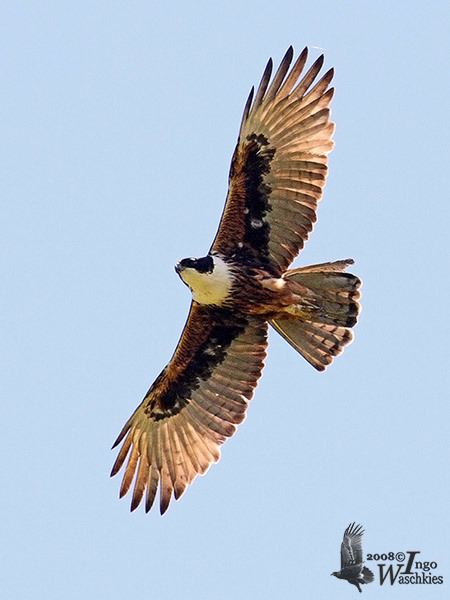
This species is associated mainly with hill forests. In India, they are commoner in the Western Ghats than along the Himalayas where they occur from Nepal to Assam. They also occur in parts of the Eastern Ghats. Their distribution range includes Sri Lanka, Burma, Thailand, Hainan, Indonesia, Sumatra, Borneo, the Philippines, Sulawesi and Sumbawa.
Behaviour and ecology
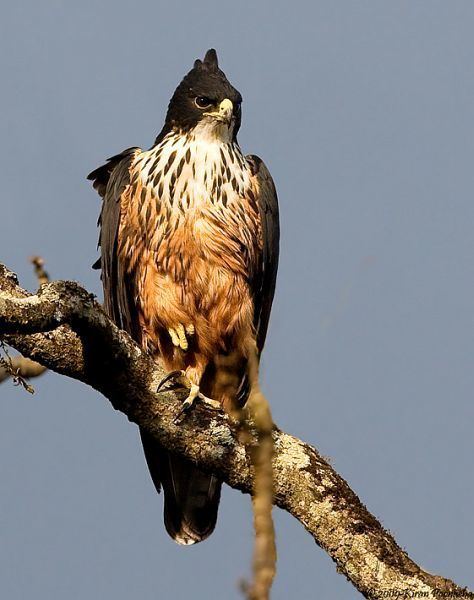
Rufous-bellied hawk-eagles are usually seen in flight, soaring high over the forest canopy. They dive to capture prey that can include birds and mammals in the air, canopy, or forest floor. Birds the size of the Sri Lanka wood pigeon, Kalij pheasant and junglefowl have been recorded as prey. The breeding season of the eagles is in winter with the young fledging in spring when the prey species are also breeding. The display flight involves stooping and wing-quivering. Their calls include a series of high pitched fwick, fwick... notes followed by a thin sweek!. They nest on a large, often bare tree, building a large platform of dry sticks and branches that they break off. The nest is lined with green leaves and a single egg is laid. Both parents take turns in incubation, feeding and nest defence.
